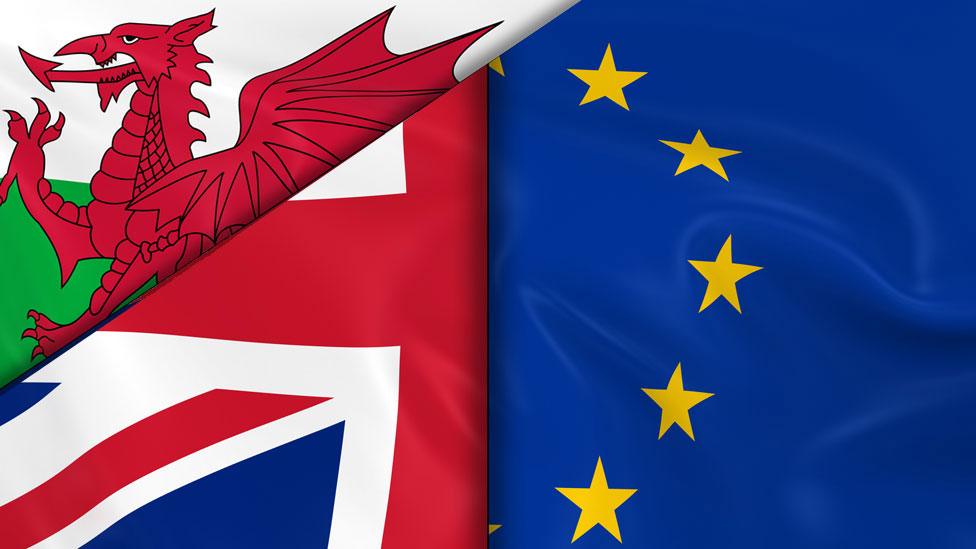Wales after Brexit: Funding map set to be torn up
- Published
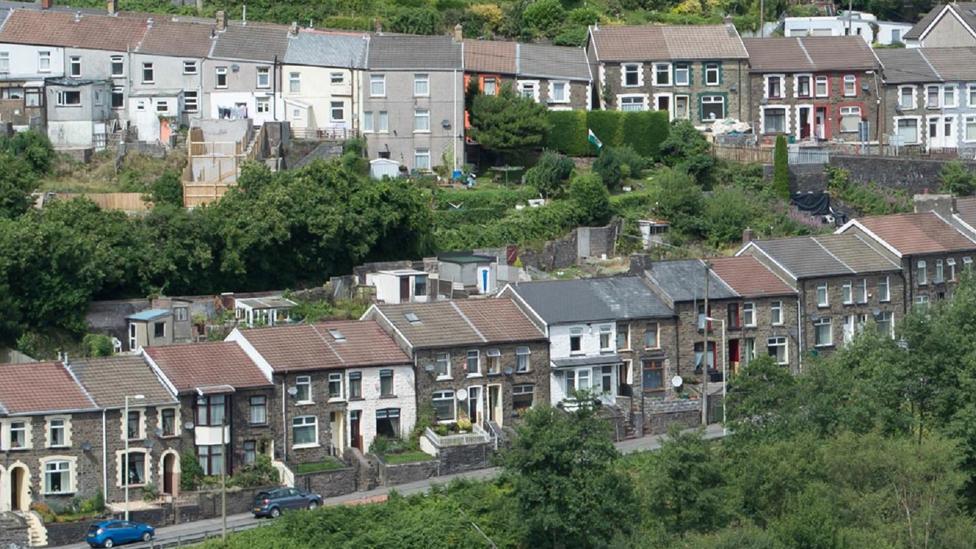
Areas like the Rhondda have qualified for top level EU funding since 2000
Struggling parts of Wales which do not currently get top-level EU grants could get more money after Brexit.
Former minister Guto Bebb believes deprived areas which currently miss out should qualify under the planned UK Shared Prosperity Fund, external.
Although details about the fund are not expected until 2020, it is likely to see the map which set west Wales and the Valleys as priority areas torn up.
Both UK and Welsh Government ministers say they favour a focus on need.
For almost 20 years, projects in west Wales and the Valleys have qualified for the highest level of EU funding, known as Objective One.
But when the map was drawn, it excluded seven council areas, including Powys, which is one of the least economically productive areas of the UK.
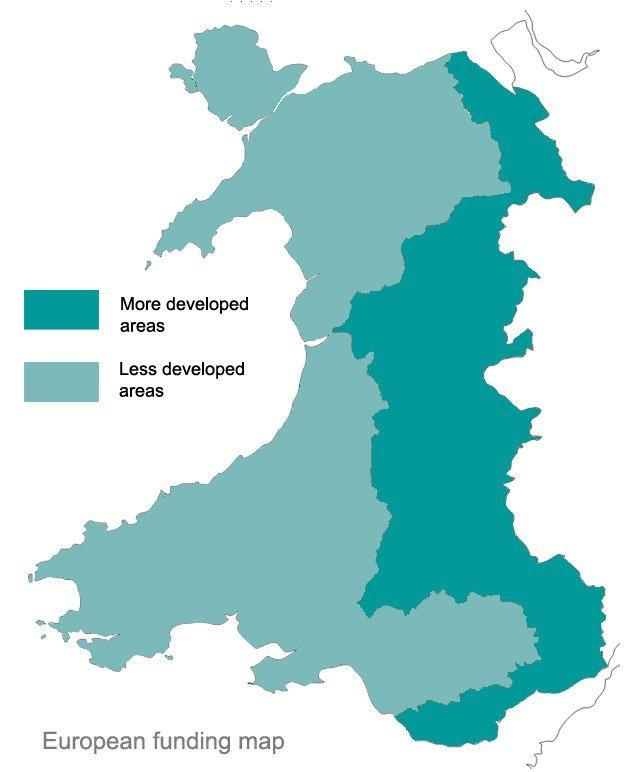
This shows how Wales is divided into two areas which qualify for different levels of EU structural funding
While Mr Bebb said he was not criticising how this was done - it meant Wales attracted additional EU funding - he said the boundaries were "somewhat artificial" and the money was not always well spent.
"If we're to develop a UK Shared Prosperity Fund, it's only natural that we look at the boundaries," he added.
As well as Powys, the Aberconwy MP points to north Wales which has six counties working together on economic regeneration, but two of which do not qualify for Objective One funding.
He believes funding should focus more on themes such as technology and science, which he says will develop growth in the wider Welsh economy.
It comes as Ceredigion - which qualifies for Objective One - is working closely with neighbouring Powys on a growth deal.
But the existing funding map is based on 20-year-old figures, according to Ceredigion council leader Ellen ap Gwynn.
"As far as we're concerned, the poverty rates in rural areas are not being recognised properly," she said.
"They use the Welsh Index of Multiple Deprivation which tells us the main deprivation is in the valleys, but I think the median income here is lower than in Merthyr Tydfil."
She called for a "clearer view of where poverty lies".
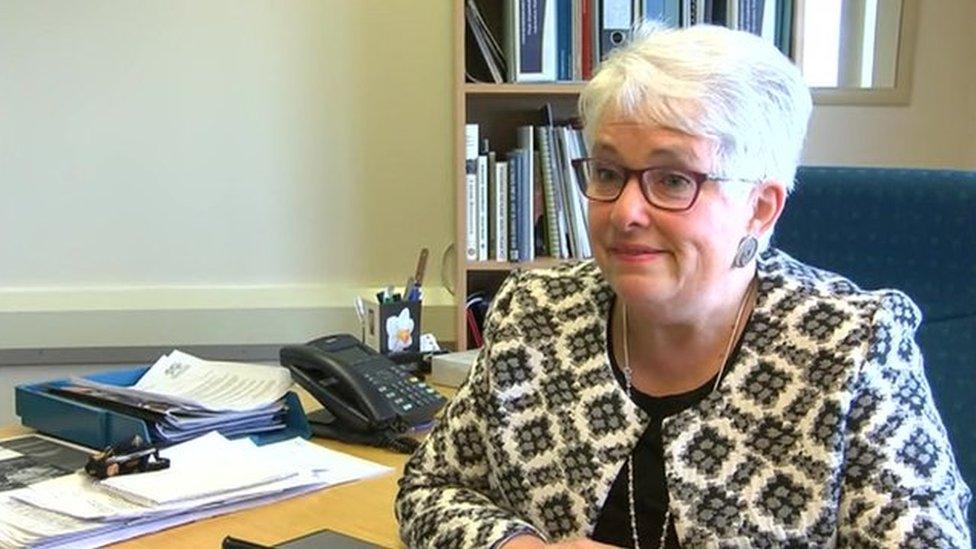
Councillor Ellen ap Gwynn says the median income is lower in Ceredigion than in Merthyr Tydfil
Details of the Mid Wales Growth Deal are still being worked out but it is hoped a number of proposals will emerge in the autumn with transport, broadband and connectivity at their heart.
A figure of up to £200m in government funding is being envisaged, with the aim of creating 4,000 jobs.
Powys and Ceredigion could both benefit, according to Fiona Stewart, the owner of Green Man Festival in Crickhowell and a business representative on the Mid Wales Growth Deal.
"What we're trying to do is create opportunity and wealth and to have things divided in a relatively small area will have an impact on growth on both sides," she said.

Powys had the lowest Gross Value Added (GVA) per hour worked in the UK in 2017 - at 65.2% of the UK figure, according to the Office for National Statistics (ONS)., external
In Ystradgynlais, the former mining area on the southern tip of Powys, a third of people are estimated to be on low incomes and a quarter get employment benefits.
The centre of the village lies in the top 10% of the most deprived areas of Wales. But it cannot get the highest level of EU funding.
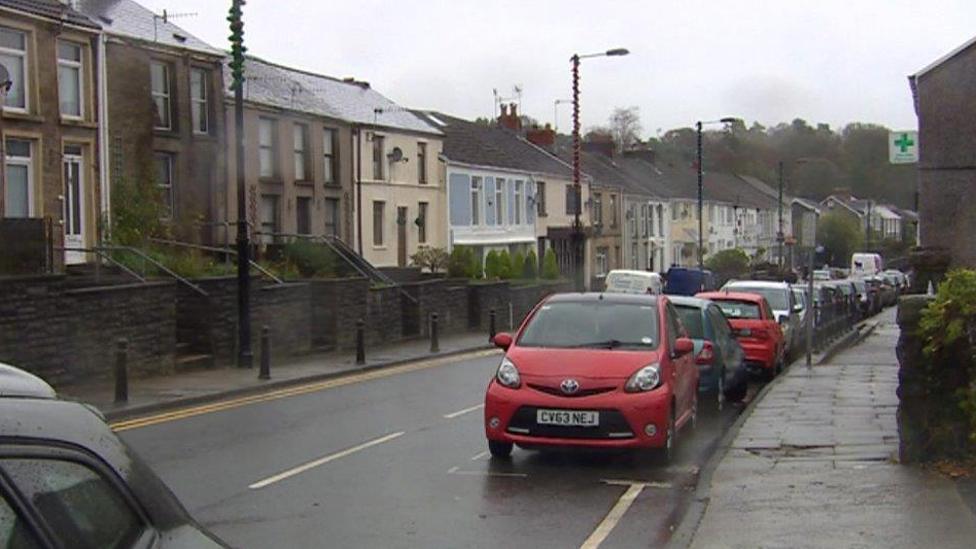
Ystalyfera lies in an area which qualifies for Objective One funding, which runs until 2020
Yet just 2.5 miles (4km) down the road, in Ystalyfera, which fares slightly better on the same metrics, the village qualifies for funding because it lies across the border in Neath Port Talbot.
There are anomalies on both sides of the line of the map, according to Wales Office Minister Lord Bourne who said the focus of the Shared Prosperity Fund would be on areas which need it the most.
Economy Minister Ken Skates said there was need on both sides of the existing border and potential for more effective targeting.
"With a new structural fund regime that enables us to focus on need more, we'll be able to ensure we can take that valuable money and invest it where it's needed most," he said.
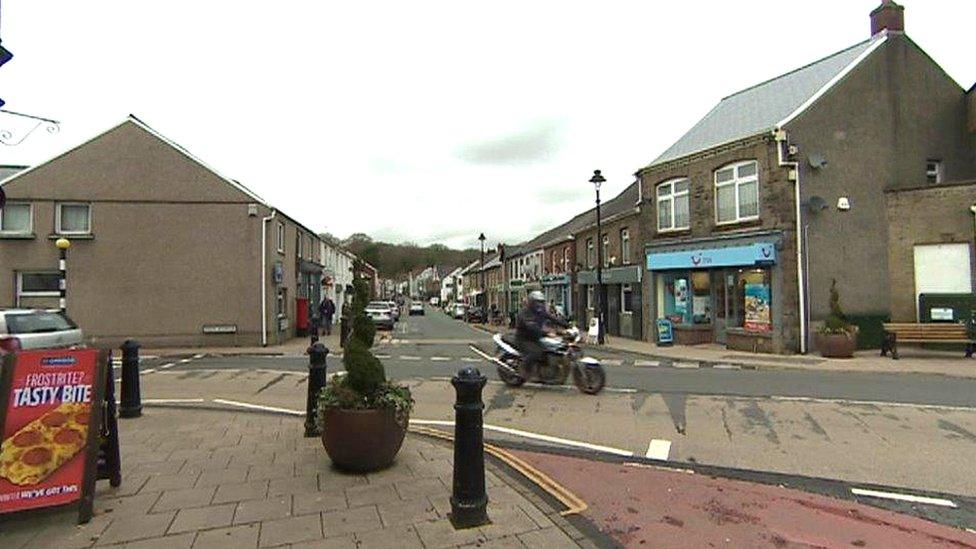
Ystradgynlais is on the doorstep of the valleys - but does not qualify for top-level EU funding
Could communities in west Wales and the Valleys lose out?
Councillor Dai Davies, Blaenau Gwent council's cabinet member for regeneration and economic development, agrees future funding should be targeted in terms of need.
But if his area gets less money, he worries about the impact on programmes like Aspire, which offers local apprentices experiences across different small businesses, as well as college.
"It could be the end of a seriously important project to us," Mr Davies said.
The determination of which communities are in most need is complicated and arguments about how to determine need are inevitable.
While Powys has the lowest productivity in terms of GVA per hour worked, Blaenau Gwent has one of the lowest levels per head.
There will also be a strong argument that the UK Treasury - the source of the money - makes sure every pound spent has the biggest impact.
There will be more on this story on Sunday Politics Wales at 11:00 BST on BBC One Wales and on the iPlayer.
- Published8 July 2019
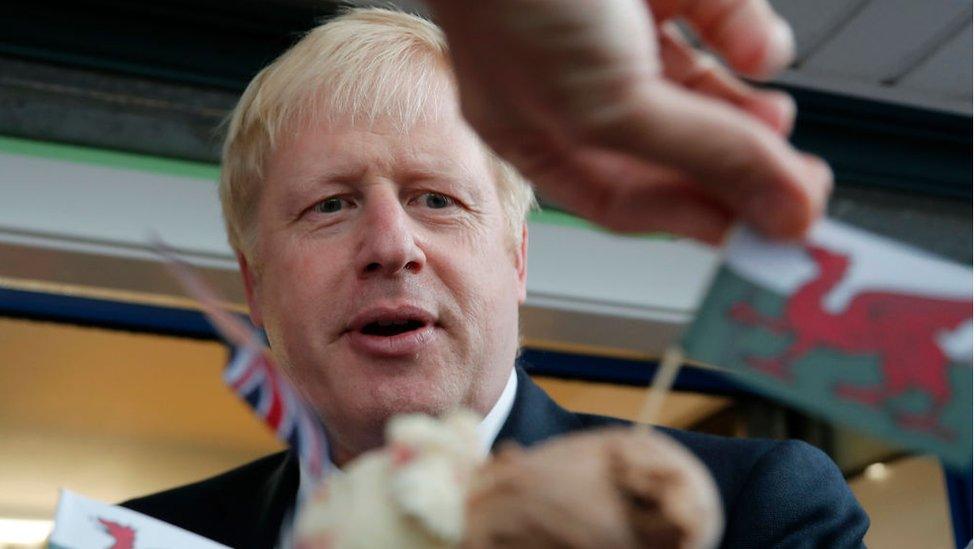
- Published11 June 2019

- Published5 March 2019
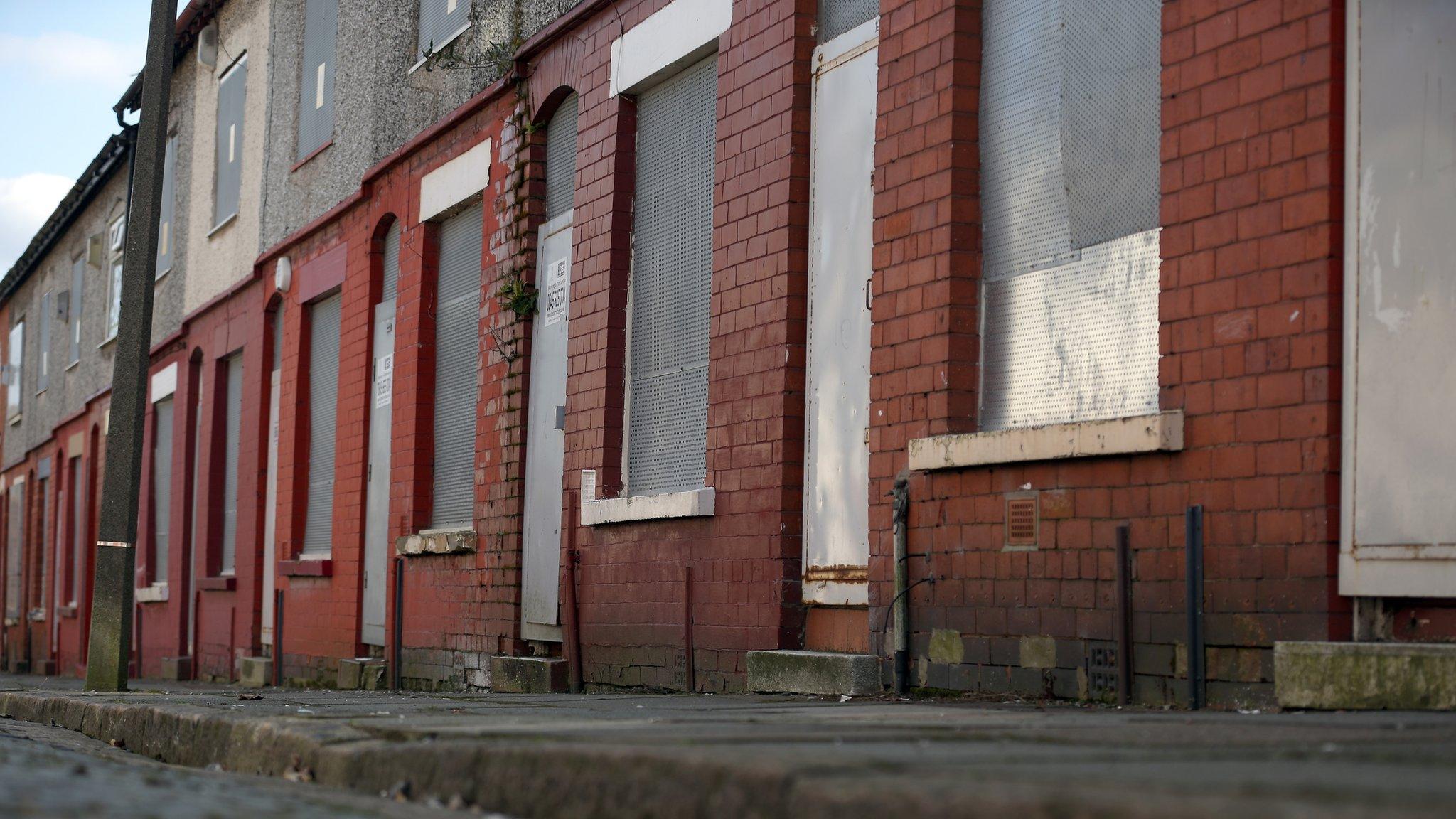
- Published8 January 2019

- Published30 September 2018
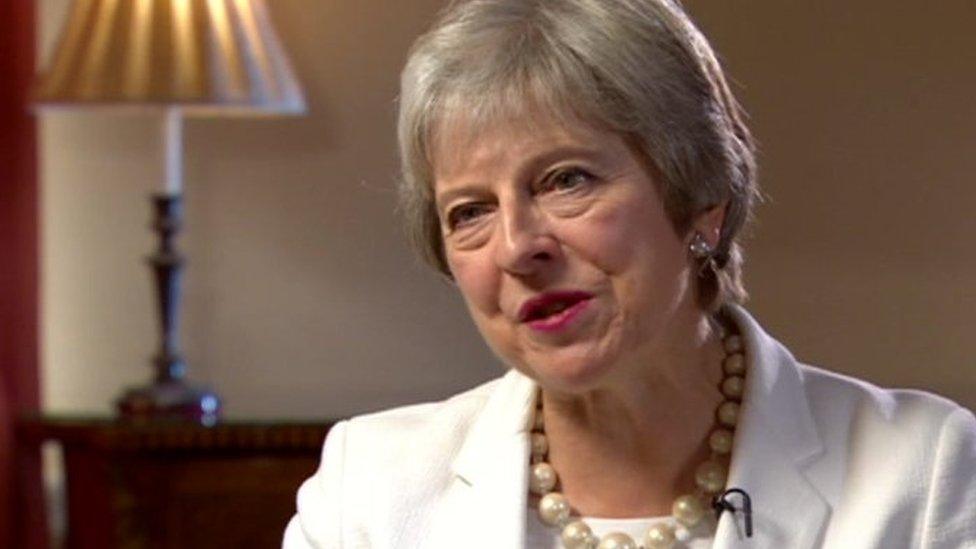
- Published9 June 2016
